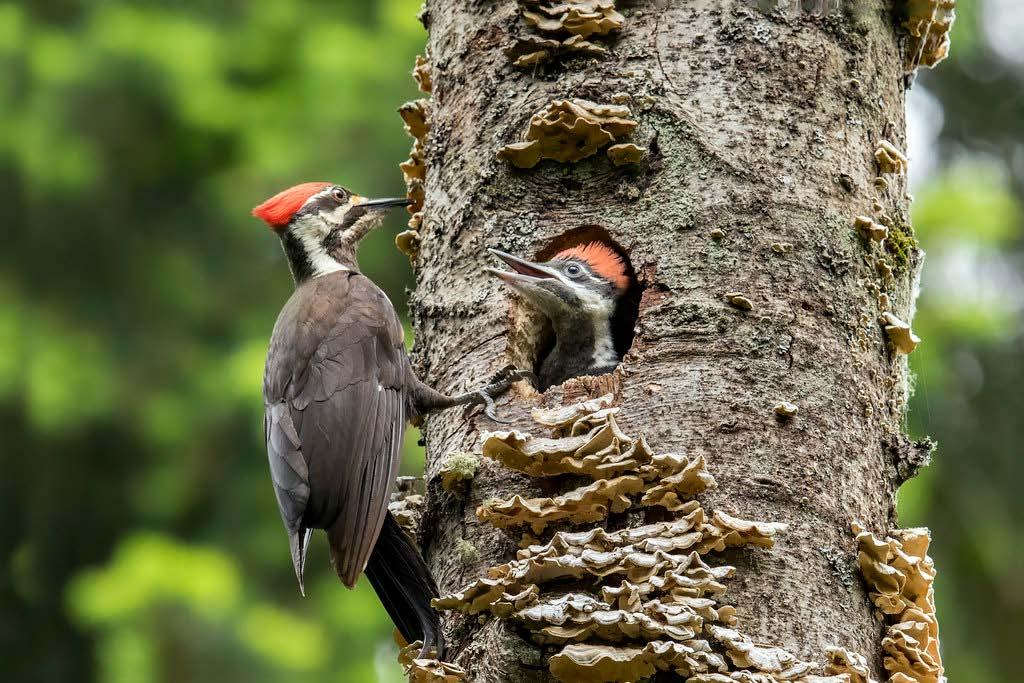
2 minute read
Birds Canada Featured Bird
Pileated Woodpecker
Ian Fife, Ontario Forest Birds Program Coordinator, Birds Canada, Brant Chapter
Advertisement
Diet
They rely on carpenter ants all year long, and eat woodboring beetles, wild fruits, and seeds when in season. Pileated Woodpeckers locate ant colonies in the summer and return in the winter to access this dependable resource. At the feeder, they make short work of suet.
Management Guidelines
Guidelines are centred on nest and roost sites. A nest tree is larger in diameter and has one cavity hole. Most roost sites will be found in trees with Pileated Woodpeckers at their cavity nest. Photo Credit: Mick Thompson extensive heart rot and of a smaller diameter. A roost tree will have a hollow chamber Identification with many cavities to escape predators. Ontario’s The largest woodpecker in North America is mostly Tree Marking Guide has extensive management black with a white line extending across the cheek guidelines for Pileated Woodpecker and can be and down the neck, and a white chin patch. The found on the OWA website. most distinct feature is its bright red crest. The males’ crest extends from the base of the bill to Did You Know? the back of the head, whereas the females’ begins The word “pileated” means “capped,” which above the eyes. Males also have a red “moustache”. refers to the red crest on the top of this bird’s Juveniles look similar to the adults. head. Conservation Status Because of the size of feeding cavities created Populations in the eastern part of this species’ range by Pileated Woodpeckers, they have been have decreased slightly over the past 50 years. The known to cut down trees and telephone poles. biggest contributor is the removal of large diameter All woodpeckers have a long (up to 4 inches), live and dead trees, which eliminates nest and roost barbed or sticky tongue they use to pull insects sites. out of the tree. Their retracted tongue wraps all Breeding Biology the way around their skull. In Ontario, the breeding season extends from late All woodpeckers have a reinforced skull April to mid-July. Cavities are excavated in dead or structured to spread the force of impact and declining live trees in all old-growth forest types. a cushioned brain. However, the direction Both adults excavate nest cavities and raise and feed of impact is important as they are just as young. susceptible to window collisions as other birds.










